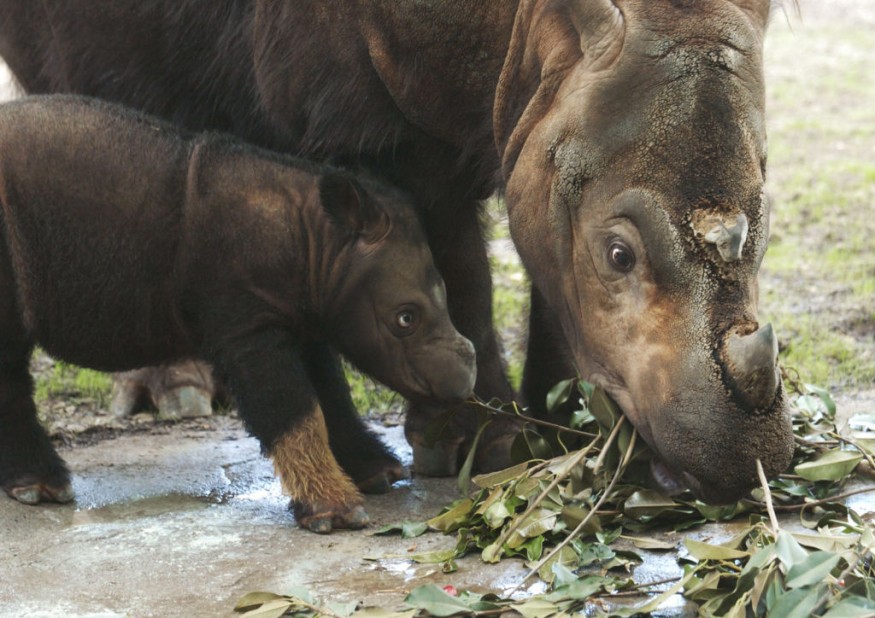A Sumatran rhino was born in western Indonesia, marking a rare sanctuary birth for the critically endangered mammal, adding another hope for the restoration of the species' population.

New Calf for the Endangered Species
A female named Delilah gave birth to a 25-kilogram (55-pound) male calf at a Sumatran rhino refuge in Way Kambas National Park in Lampung province, on Sumatra's southern tip.
The calf is fathered by Harapan, a male born at the Cincinnati Zoo in 2006. He was the final Sumatran rhino in the world to be repatriated to Indonesia, which means that the whole Sumatran rhino population is currently in Indonesia.
It was the fifth calf born at the park as part of a semiwild breeding program, said Indonesian Environment and Forestry Minister Siti Nurbaya Bakar.
The new addition to Way Kambas' Sumatran rhino herd of ten comes after another baby Sumatran rhino was born there in September.
"This birth is the second birth of the Sumatran rhino in 2023. This further strengthens the government's commitment to rhino conservation in Indonesia," the minister said.
Delilah and her kid are doing well, as the calf can now stand upright and walk. He was able to breastfeed in a standing posture not long after he was discovered.
The yet-to-be-named calf is Delilah's first successful delivery.
"Two years ago there was only one captive Sumatran rhino pair in the world able to successfully produce offspring. Now there are three pairs - six rhinos - who are proven breeders. Those are much better odds for the long-term survival of this species," said Nina Fascione, the International Rhino Foundation's (IRF's) executive director.
Sumatran Rhino Population
Sumatran rhinoceroses are the smallest living rhinoceroses and the only Asian rhinoceroses to have two horns. They have lengthy hair and are more closely connected to extinct woolly rhinos than any other rhino species living today.
The World Wide Fund for Nature (WWF) and the International Union for Conservation of Nature (IUCN) believe that the Sumatran rhino population in Indonesia is less than 80.
The Sumatran rhino once inhabited the slopes of the Eastern Himalayas in Bhutan and eastern India, as well as Myanmar, Thailand, Vietnam, China, and the Malay Peninsula.
The species is now exclusively found on the Indonesian islands of Sumatra and Borneo. According to experts, the third subspecies is most likely extinct.
In Indonesia, the Sumatran rhino is legally protected.
The International Rhino Foundation (IRF) established the Sumatran Rhino Sanctuary (SRS) in 1996 in collaboration with the local NGO Yayasan Badak Indonesia (YABI), which now oversees the SRS, the Indonesian Ministry of Environment and Forestry, Way Kambas National Park, and Taman Safari International.
Sumatran rhinos are listed as critically endangered on the IUCN Red List of Threatened Species.
They are threatened by the erosion of tropical forest habitat and poachers who murder the animals for their horns, which are treasured in China and other areas of Asia for manufacturing ornaments and for use in traditional medicine.
Related Article : Wild Sumatran Rhinos Considered to Be Extinct in Malaysia
© 2025 NatureWorldNews.com All rights reserved. Do not reproduce without permission.





